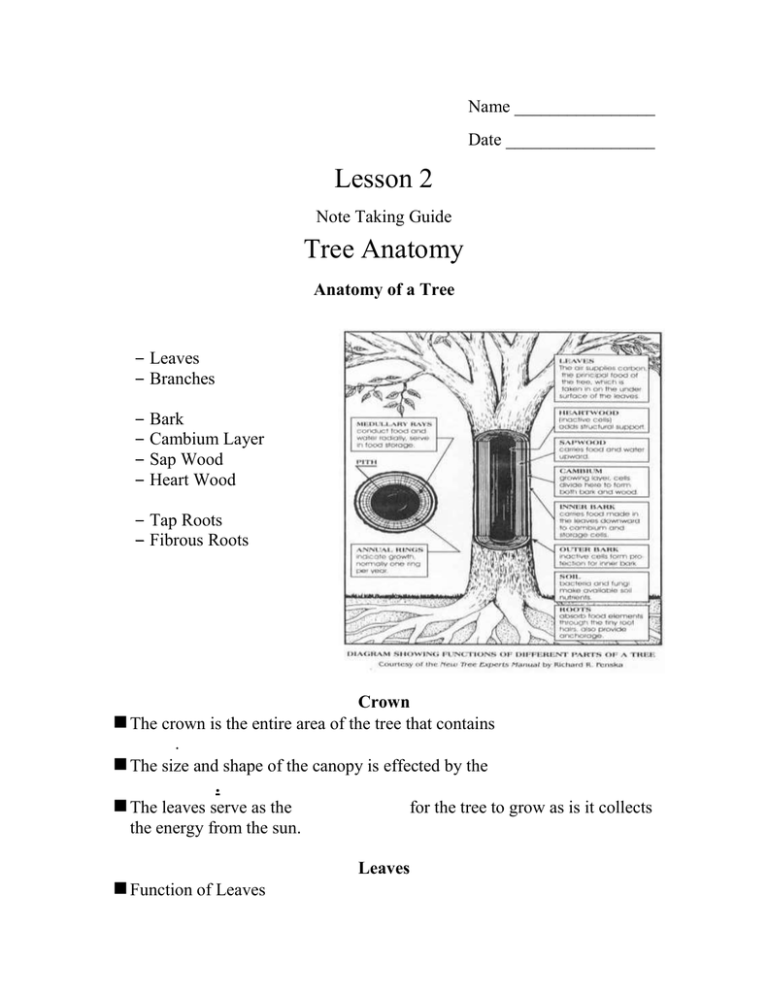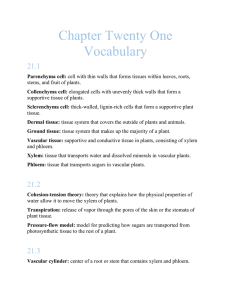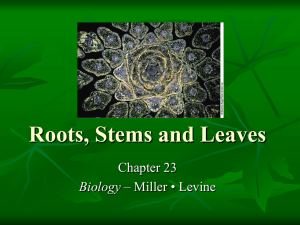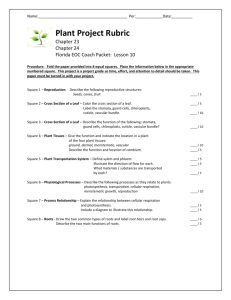Lesson 2 Tree Anatomy
advertisement

Name ________________ Date _________________ Lesson 2 Note Taking Guide Tree Anatomy Anatomy of a Tree Crown – Leaves – Branches Trunk – Bark – Cambium Layer – Sap Wood – Heart Wood Roots – Tap Roots – Fibrous Roots Crown The crown is the entire area of the tree that contains branches with leaves. The size and shape of the canopy is effected by the environment and the tree species. The leaves serve as the energy factory for the tree to grow as is it collects the energy from the sun. Function of Leaves Leaves 1. Photosynthesis is the process by which plants produce their food. 2. The leaf carries out transpiration which is the loss of water and the gas exchange of CO2. 3. The leaf can store some food, which can be transferred to other areas of the plant. Leaves Leaves contain cells full of hloroplasts. Chloroplasts are the ultimate energy factories of the tree. Chloroplasts convert sunlight and carbon dioxide into glucose (sugar) and oxygen in the process of photosynthesis. Cross Section of Leaf Chloroplasts concentrated in Palisade. Xylem and Phloem connect all the way to roots. Basic Reaction Photosynthesis Balanced Reaction – 6 CO2 + 6 H2O = C6H12O6 + 6 O2 Leaf Parts 1. The blade, which is the main body of the leaf. 2. The petiole, which is the structure which attaches the blade to the stem. 3. The midrib, which is the large central vein down the middle of the leaf. 4. The apex, which is the tip of the leaf. 5. The base, which is the bottom of the leaf and attaches to the petiole, or if a petiole is absent, directly to the stem. (A leaf with no petiole is said to be "sessile.") 6. The margin, which is the edge of the leaf. Types of Leaves 1. Simple leaves which are undivided leaves or have a totally intact blade. 2. Compound leaves which are leaves whose blade is divided into several distinct leaflets. 3. Needle leaves which are narrow, compact leaves such as pine or fir needles. Function of Trunk or Stem Trunk 1. Transports water and nutrients from the roots to the leaves. 2. Supports the leaves of a plant and also the fruit and flowers. 3. Food storage. 4. Diametrical growth in the cambium, where cell division occurs. Cross Section of Trunk Xylem and Phloem transports water and nutrients throughout the tree. Xylem transports materials up. Phloem transports materials down. Sapwood stores liquid and food produced by the tree. Functions of Roots Roots 1.Absorbs water, oxygen and nutrients (root hairs take up H2O and nutrients). 2.Transports water and nutrients to the stem. 3.Anchors the plant and keeps it in a stable position. 4.Stores food in the form of starch (for example in the taproot of a carrot or turnip). – Note: Maple tree feeder roots start just six inches below the surface of the soil. Types of Roots 1. The fibrous root system, such as in corn or beans in which the roots branch from the bottom of the plant; or 2. The taproot where a long tapering root, such as in the carrot and dandelions, develops. Is All Sap Equal?





